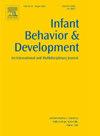扩展工具箱:25年来婴儿研究方法的变化
IF 2
3区 心理学
Q3 PSYCHOLOGY, DEVELOPMENTAL
引用次数: 0
摘要
在过去的四分之一个世纪里,婴儿行为研究领域发生了显著的变化。在这篇特刊评论文章中,我们综合了这些方法上的变化及其对发展科学的影响。根据2000年和2024年发表在《婴儿行为与发育》杂志上的实证文章的系统比较评估,我们批判性地评估了五个关键的方法维度:研究背景、样本和细胞大小、编码实践、数据分析技术和统计软件,以及开放科学实践。我们的综合揭示了该领域如何从传统的实验室环境扩展到更多样化的研究环境,包括远程和档案方法,以增强生态有效性和样本多样性。我们追踪样本大小几乎翻了一番,实验细胞大小增加了2.5倍,加强了统计能力和可重复性。我们研究了在眼动追踪和语音分析等领域选择性采用自动化方法,以及对复杂行为进行手动编码的持久价值。我们观察到从经典统计方法到更细致的分析方法的转变,越来越多地在开源软件中实现,反映了技术能力和理论向捕获发展复杂性的转变。最后,我们记录了开放科学实践的出现,这些实践现在出现在超过三分之一的已发表研究中。在整个过程中,我们强调这些方法的转变如何反映更广泛的驱动因素:复制危机、技术创新和不断发展的理论观点。展望未来,我们提供了一个方法发展路线图,以这些进步为基础,同时解决该领域的持续挑战。本文章由计算机程序翻译,如有差异,请以英文原文为准。
Expanding the toolbox: 25 years of methodological change in infant research
The landscape of infant behavior research has undergone a remarkable transformation over the past quarter-century. In this special issue opinion article, we synthesize these methodological changes and their implications for developmental science. Drawing on a systematic comparative assessment of empirical articles published in Infant Behavior and Development in 2000 and 2024, we critically evaluate five key methodological dimensions: research contexts, sample and cell sizes, coding practices, data analysis techniques and statistical software, and open science practices. Our synthesis reveals how the field has expanded beyond traditional laboratory settings toward more diverse research environments, including remote and archival approaches that enhance ecological validity and sample diversity. We trace how sample sizes have nearly doubled and experimental cell sizes have increased 2.5-fold, strengthening statistical power and replicability. We examine the selective adoption of automated methodologies in domains like eye tracking and speech analysis, alongside the persistent value of manual coding for complex behaviors. We observe a transition from classical statistical methods to more nuanced analytical approaches, increasingly implemented in open source software, reflecting both technological capabilities and theoretical shifts toward capturing developmental complexity. Finally, we document the emergence of open science practices, which now appear in over a third of published studies. Throughout, we highlight how these methodological transformations reflect broader drivers: the replication crisis, technological innovations, and evolving theoretical perspectives. Looking forward, we offer a roadmap for methodological development that builds on these advances while addressing persistent challenges in the field.
求助全文
通过发布文献求助,成功后即可免费获取论文全文。
去求助
来源期刊

Infant Behavior & Development
PSYCHOLOGY, DEVELOPMENTAL-
CiteScore
4.10
自引率
4.80%
发文量
94
期刊介绍:
Infant Behavior & Development publishes empirical (fundamental and clinical), theoretical, methodological and review papers. Brief reports dealing with behavioral development during infancy (up to 3 years) will also be considered. Papers of an inter- and multidisciplinary nature, for example neuroscience, non-linear dynamics and modelling approaches, are particularly encouraged. Areas covered by the journal include cognitive development, emotional development, perception, perception-action coupling, motor development and socialisation.
 求助内容:
求助内容: 应助结果提醒方式:
应助结果提醒方式:


